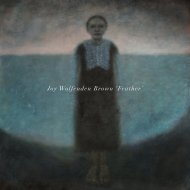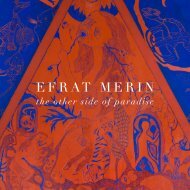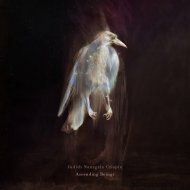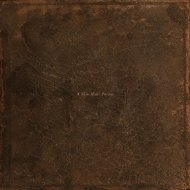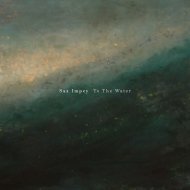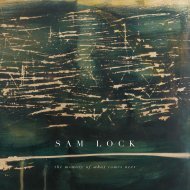Sarah Ball 'Bertillon'
Catalogue of Sarah Ball's solo exhibition 'Bertillon' at Anima-Mundi, St. Ives
Catalogue of Sarah Ball's solo exhibition 'Bertillon' at Anima-Mundi, St. Ives
Create successful ePaper yourself
Turn your PDF publications into a flip-book with our unique Google optimized e-Paper software.
S A R A H B A L L B E R T I L L O N
“We carry the genes and the culture of our ancestors, and what<br />
we think about them shapes what we think of ourselves, and how<br />
we make sense of our time and place. Are these good times, bad<br />
times, interesting times? We rely on history to tell us. History<br />
and science too, help us put our lives in context. But if we want<br />
to meet the dead looking alive, we turn to art… in imagination<br />
we chase the dead, shouting, “Come back!”... we sense that<br />
the dead have a vital force still – they have something to tell<br />
us... I don’t claim we can hear the past or see it. But we can<br />
listen and look.This is how we live in the world: romancing...<br />
For many years we have been concerned with de-centering the<br />
grand narrative. We have become romantic about the rootless,<br />
the broken, those without a voice and sceptical about great men,<br />
dismissive of heroes. That’s how our enquiry into human drama<br />
has evolved: first the gods go, and then the heroes, and then we<br />
are left with our grubby, compromised selves.” 1<br />
underscores the inquiry that has been driving my work for<br />
the last few years: the grouping of people and the naming<br />
and identification of types.<br />
Archival documentary photography, police mug shots and<br />
official identity cards are the source imagery for paintings<br />
of people caught in a fraction of a second on silver<br />
nitrate or glass for official and governmental purposes.<br />
The titles of the works I make were often the labels given<br />
to the photographic image by the official in authority<br />
– a policeman, civil servant or immigration officer<br />
who needed to label individuals into neat, recognisable<br />
and convenient types based on their crime, nationality,<br />
ethnicity or religion.<br />
Hilary Mantel<br />
I am an introvert. At least, I am according to the<br />
American journalist who interviewed me prior to a recent<br />
solo exhibition in Dallas. Confronted by a deadline and<br />
under pressure to deliver insightful column inches for an<br />
audience, she opted to write a portrait of a recognisable<br />
and well-understood type – a quiet and solitary English<br />
female artist. The word introvert is derived from the<br />
Latin ‘introvertere’ (intro ‘to the inside’ and vertere ‘to<br />
turn’) and in the article I am portrayed as a driven loner,<br />
who walks the ancient landscapes of West Penwith, eats<br />
soups in winter, salads in summer: the solitary artist<br />
in her Cornish studio. As with all clichés – it holds some<br />
truth. I understand this need to catergorise, because it<br />
Despite representing a form of reality, photographic<br />
images are not necessarily objective statements of fact.<br />
They are subjective representations of truth interpreted<br />
by a camera and then the viewer. Through translation<br />
in my work, these images are further interpreted by me,<br />
the painter. I seek to visually liberate the person from<br />
their official monochrome documentation and speculate<br />
on their true nature or humanity. I am interested in this<br />
act of translation; from the apparent certainty of this<br />
photographic record and official labeling to the malleable<br />
quality of paint, my work calls into question history,<br />
memory and story but also perception.<br />
This latest exhibition at Anima-Mundi is called ‘Bertillon’<br />
and seeks to further explore the relationship between the<br />
1
label, type and image but also provokes percipience in a<br />
deliberately more open ended way.<br />
The exhibition takes its title from Alphonse Bertillon, who<br />
was a French police officer and biometrics researcher who<br />
applied the anthropological technique of anthropometry<br />
to law enforcement in the late 1800’s, using photography<br />
to create an identification system based on physical<br />
measurements. Used to evidence the pathology of crime<br />
and criminals, photography was thought to connect<br />
outward physical appearance and inner character traits.<br />
In essence it was believed good people ‘looked good’ and<br />
morally suspect people ‘looked bad or ugly’. They searched<br />
for; “The harmony of moral beauty and physical beauty… the<br />
science of discovering the relation between the exterior and interior<br />
– between the visible surface and the invisible spirit it covers…” 2<br />
The source material for this show is wider ranging than<br />
in previous exhibitions, pulling together photographs of<br />
forced laborours from The Deutsch-Russisches Museum<br />
Berlin-Karlshorst (FL1 – 6), Camp guards from The<br />
Imperial War Museum archive (CG 1 – 9), an immigrant<br />
from The Sherman archives (IM1), Subjects from the<br />
Alphonse Bertillon exhibition at MOMA New York<br />
(BE1 – BE9) and police archived mug-shots from various<br />
archives (AC 1 – AC15).<br />
My uncertainty concerning human capability was peaked<br />
when I read the following passage from a transcribed<br />
interview with Australian author Richard Miller Flanagan;<br />
“Some Japanese women had come to my father’s house to say sorry<br />
to him some years before. They were part of a network in Japan<br />
that had campaigned hard to try to get the history curriculum in<br />
the schools changed to accurately reflect the reality of Japanese<br />
militarism. One of them was a journalist who had done very<br />
brave and extraordinary work exposing the horrors of Unit 731,<br />
I think it is, the Japanese small army in Manchuria, that did<br />
the most horrific biological experiments on Chinese civilians and<br />
prisoners. Through these quite extraordinary and brave women<br />
I was able to find these guards and make contact with them and<br />
go and meet them. I met one who had been the sort of Ivan the<br />
Terrible of my father’s camp, who the Australians knew as “the<br />
Lizard”. I hadn’t known until five minutes before I arrived at<br />
this taxi company in an outer suburb of Tokyo that this man I<br />
was meeting was actually the Lizard, and that rather undid me,<br />
I must say. He was hated by the Australians for his violence; he<br />
was sentenced to death for war crimes after the war; he had his<br />
sentenced commuted to life imprisonment, and he then was released<br />
in an amnesty in 1956. The man I met though was this courteous,<br />
kindly and generous old man. Bizarrely, an earthquake hit Tokyo<br />
as I was sitting in the room with him, and the whole room pitched<br />
around like a bobbling dinghy in a most wild sea, and I saw<br />
him frightened. I realised whatever evil is, it wasn’t in that room<br />
with us.” 3<br />
American writer Ursula Le Guin believed that “If you<br />
cannot or will not imagine the results of your actions, there’s<br />
no way you can act morally or responsibly. Little kids can’t<br />
do it; babies are morally monsters – completely greedy. Their<br />
imagination has to be trained into foresight and empathy”.<br />
2
Empathy is at the root of all my work. But of course,<br />
empathy can sometimes prove challenging when<br />
presented with extremes. Although the research material<br />
comes from very different sources it still deals with the<br />
issues of how we ‘fit’ together; how we judge, make<br />
assumptions and form prejudices and in turn act upon<br />
those prejudices. Philosopher, Alain De Botton once<br />
wrote “Images are important partly because they can generate<br />
compassion… to recognize ourselves in the experience of strangers<br />
and can make their pain matter to us as much as our own.” 5<br />
Bertillon’s investigations put simply were about whether<br />
or not we are able to judge a book by its cover. I hope<br />
that through translation of these chosen images I posit<br />
a deep rooted question in the mind of the viewer as to<br />
how possible this task really is, but furthermore on the far<br />
reaching implications of doing so. Every day I test myself<br />
stringently on this, it is a test that I hope is represented<br />
through this collection of paintings. In terms of my work,<br />
I would apply the following from a journal entry from<br />
John Steinbeck when contemplating his own creative<br />
output; “In every honest bit of writing in the world…. there is a<br />
base theme. Try to understand men, if you understand each other<br />
you will be kind to each other. Knowing a man well never leads<br />
to hate and nearly always leads to love. There are shorter means,<br />
many of them. There is writing promoting social change, writing<br />
punishing injustice, writing in celebration of heroism, but always<br />
that base theme. Try to understand each other”. 6<br />
1 Extract from ‘The Dead Have Something To Tell Us’, Hilary<br />
Mantel’s Reith Lectures, 2017<br />
2 Johann Kasper Lavater ‘Essays on Physiognomy: Designed to<br />
Promote the Knowledge and Love of Mankind. Vol 1’, 1789<br />
3 From a conversation between Ramona Koval and Richard<br />
Miller Flanagan<br />
4 “The Magician’, Guardian Interview, December, 2005<br />
5 Alain De Botton, ‘Religion for Atheists’, Penguin, 2012<br />
6 Journal entry by John Steinbeck, 1938 from the Introduction<br />
to ‘Of Mice and Men’, Penguin, 1994<br />
<strong>Sarah</strong> <strong>Ball</strong>, 2017<br />
14
AC1<br />
oil on gesso primed canvas . 80 x 80 cm<br />
25
AC2<br />
oil on gesso primed panel . 18 x 13 cm<br />
6
AC3<br />
oil on gesso primed panel . 18 x 13 cm<br />
7
AC4<br />
oil on gesso primed panel . 18 x 13 cm<br />
8
AC5<br />
oil on gesso primed panel . 18 x 13 cm<br />
9
AC6<br />
oil on gesso primed panel . 18 x 13 cm<br />
10
AC7<br />
oil on gesso primed panel . 18 x 13 cm<br />
11
12
AC8<br />
oil on gesso primed canvas . 90 x 90 cm<br />
13
AC9<br />
oil on gesso primed panel . 18 x 13 cm<br />
14
AC10<br />
oil on gesso primed panel . 18 x 13 cm<br />
15
AC11<br />
oil on gesso primed panel . 18 x 13 cm<br />
16
AC12<br />
oil on gesso primed panel . 18 x 13 cm<br />
17
AC13<br />
oil on gesso primed canvas . 90 x 90 cm<br />
18
19
20
AC14<br />
oil on gesso primed canvas . 90 x 90 cm<br />
21
AC15<br />
oil on gesso primed canvas . 100 x 100 cm<br />
22
23
BE1<br />
oil on gesso primed panel . 18 x 13 cm<br />
24
BE2<br />
oil on gesso primed panel . 18 x 13 cm<br />
25
BE3<br />
oil on gesso primed panel . 18 x 13 cm<br />
26
BE4<br />
oil on gesso primed panel . 18 x 13 cm<br />
27
BE5<br />
oil on gesso primed panel . 18 x 13 cm<br />
28
BE6<br />
oil on gesso primed panel . 18 x 13 cm<br />
29
BE7<br />
oil on gesso primed panel . 18 x 13 cm<br />
30
BE8<br />
oil on gesso primed panel . 18 x 13 cm<br />
31
32
BE9<br />
oil on gesso primed panel . 18 x 13 cm<br />
33
IM1<br />
oil on gesso primed canvas . 90 x 90 cm<br />
34
35
FL1<br />
oil on gesso primed panel . 25.5 x 20 cm<br />
36
FL2<br />
oil on gesso primed panel . 25.5 x 20 cm<br />
37
FL3<br />
oil on gesso primed panel . 25.5 x 20 cm<br />
38
FL4<br />
oil on gesso primed panel . 25.5 x 20 cm<br />
39
40
FL5<br />
oil on gesso primed panel . 18 x 13 cm<br />
41
FL6<br />
oil on gesso primed canvas . 90 x 90 cm<br />
42
43
44
CG1-9<br />
oil on gesso primed panel . 18 x 24 cm each<br />
45
BIOGRAPHY<br />
Born 1965, South Yorkshire<br />
1983 - 1986 Newport Art College<br />
2003 - 2005 MFA, Bath Spa University<br />
Lives near Penzance, Cornwall<br />
SOLO EXHIBITIONS<br />
2017 Bertillon, Anima-Mundi, St. Ives<br />
Kindred. Conduit Gallery, Dallas<br />
2016 The Garden Room, House of St Barnabas, London<br />
2015 Immigrants. Millennium, St Ives<br />
& Tremenheere Sculpture Gardens<br />
2014 Accused : Part III, Conduit Gallery, Dallas<br />
Damaged Humans, London<br />
2013 Accused : Part II, Millennium, St Ives<br />
2012 Accused, Millennium, St Ives<br />
2011 <strong>Sarah</strong> <strong>Ball</strong> & Meirion Ginsberg, Martin Tinney, Cardiff<br />
SELECTED GROUP EXHIBITIONS<br />
2016 From Silence, Herrick Gallery, Mayfair, London<br />
The Marmite Prize for Painting, Block 336, London<br />
& High Lanes Gallery, Drogheda, Ireland<br />
Art16, Olympia, London<br />
Art Central, Hong Kong<br />
ArtNY, Pier 94, NY<br />
The Threadneedle Prize, Mall Galleries, London<br />
2015 The Dallas Art Fair, Dallas<br />
Art 15, Olympia, London<br />
London Art Fair, London<br />
2014 Miniare, London<br />
The National Open Art Competition:<br />
Somerset House (Winner: Best from Wales)<br />
Threadneedle Prize, Mall Galleries (Shortlisted artist)<br />
Fourteen, Llantarnam Grange Arts Centre, Wales<br />
The Dallas Art Fair, Dallas<br />
Art 14, Olympia, London<br />
One’s Self As Another, RWA, Bristol<br />
London Art Fair, London<br />
2013 The Threadneedle Prize, Mall Galleries, London<br />
Suspended Sentences, Newlyn, Cornwall<br />
Royal Academy of Arts Summer Exhibition, Bristol<br />
Welsh Artist of the Year Exhibition;<br />
Cardiff (Winner : Welsh Artist of the Year 2013)<br />
London Art Fair, London<br />
2012 The National Open Art Competition;<br />
(Winner: Best from Wales)<br />
Never Never, Aberystwyth Arts Centre<br />
London Art Fair, London<br />
2011 Hunting The Hunted (with Beth Carter& Duncan Cameron);<br />
bo.lee, Bath<br />
Wunderkammer (Off site exhibition at The Octagon Chapel);<br />
bo.lee Gallery, Bath<br />
London Art Fair, London<br />
2010 RWA 158th Autumn Exhibition, RWA, Bristol<br />
Here & Now, Newport Museum and Art Galleries, Newport<br />
RWA 3rd Open Painting Exhibition, RWA, Bristol<br />
2009 RWA 157th Autumn Exhibition, RWA, Bristol<br />
Threadneedle Prize, Mall Galleries, London<br />
2008 Purchase Prize;<br />
Wales Millennium Centre, University of Glamorgan<br />
2007 RWA Autumn Exhibition, RWA, Bristol<br />
Washington Gallery, Penarth (curated by John Selway)<br />
MA all, Stroud House Gallery, Stroud<br />
2006 Undercover, Oriel Davies, Powys<br />
Purchase Prize (short listed);<br />
Oriel Y Bont, University of Glamorgan<br />
Presque Vu, Paintworks, Bristol<br />
2005 Artsway Open 05, Artsway, Hampshire<br />
Represented by Anima-Mundi. Works in collections worldwide
Published by Anima-Mundi to coincide with the exhibition ‘Bertillon’ by <strong>Sarah</strong> <strong>Ball</strong><br />
All rights reserved. No part of this publication may be reproduced, stored in a retrieval system or transmitted in any form or<br />
by any means electronic, mechanical, photocopying, recording or otherwise without the prior permission of the publishers<br />
Photography by Christopher Morris<br />
Street-an-Pol . St. Ives . Cornwall . Tel: 01736 793121 . Email: mail@anima-mundi.co.uk . www.anima-mundi.co.uk





